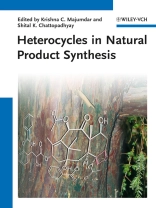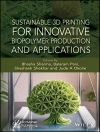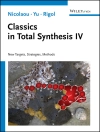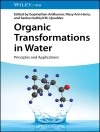Filling a gap on the market, this handbook and ready reference is unique in its discussion of the usefulness of various heterocyclic systems in the synthesis of natural products.
Clearly structured for easy access to the information, each chapter is devoted to a certain class of heterocycle, providing a tabular presentation of the natural products to be covered containing the particular heterocyclic ring system along with their biological profile, occurrence and most important physical properties, backed by the appropriate references. In addition, the application of the heterocyclic system to the synthesis of natural products ic covered in detail.
Of great interest to organic, natural products, medicinal and biochemists, as well as those working in the pharmaceutical and agrochemical industry.
Tabla de materias
Preface
PART I: Strained Heterocycles in the Synthesis of Natural Products
AZIRIDINES IN NATURAL PRODUCT SYNTHESIS
Introduction
Synthesis of Natural Products Containing Aziridine Units
Synthesis of Natural Products Involving the Transformation of an Aziridine Moiety
Conclusions
AZETIDIINE AND ITS DERIVATIVES
Introduction
Structural Description of Azetidines
Synthetic Methodologies for the Formation of Azetidine Rings
Synthesis of Mugineic Acids
Synthesis of Penaresidins
Structural Description of Azetidin-2-ones
Synthetic Methodologies for the Formation of Azetidin-2-ones
Synthesis of Penicillin
Synthesis of Cephalosporin
Conclusion
EPOXIDES AND OXETANES
Introduction
Epoxides in Natural Product Synthesis
Oxetane in Natural Product Synthesis
Conclusion
PART II: Common Ring Heterocycles in Natural Product Synthesis
FURAN AND ITS DERIVATIVES
Introduction
Natural Products Containing the Furan Ring
Furan Derivatives as Reagents in the Synthesis of Natural Products
Summary
PYRAN AND ITS DERIVATIVES
Introduction
Application of Pyran Moieties in the Synthesis of Natural Products
Conclusion
PYRROLE AND ITS DERIVATIVES
Introduction
Synthesis of Pyrrole Natural Products
Synthesis of Non-pyrrole Natural Products from Pyrrole Derivatives
Conclusion
INDOLES AND INDOLIZIDINES
Introduction
Applications of Indoles and Indolizidines in the Synthesis of Natural Products
Conclusion
PYRIDINE AND ITS DERIVATIVES
Introduction
Application of the Pyridine Moiety in the Synthesis of Natural Products
Conclusion
QUINOLINES AND ISOQUINOLINES
Introduction
Application of Quinolines and Isoquinolines in the Synthesis of Natural Products
Conclusion
CARBAZOLES AND ACRIDINES
Introduction to Carbazoles
Total Synthesis of Carbazole Alkaloids
Introduction to Acridines
Synthesis of Acridines and Acridones
THIOPHENE AND OTHER SULFUR HETEROCYCLES
Introduction
Synthesis of Natural Products Containing Thiophene
Synthesis of Natural Products Containing Other Sulfur Heterocycles
Conclusion
OXAZOLE AND ITS DERIVATIVES
Introduction
Mono-Oxazoles
Unconnected Bis- and Tris-Oxazoles
Cyclic Polyheterocyclic Metabolites Containing Single Oxazole Residues
Conjugated Bis-Oxazoles
Tris- and Poly-Oxazoles
THIAZOLINE AND THIAZOLE AND THEIR DERIVATIVES
Introduction
General Methods for the Synthesis of Thiazoline and Thiazole Derivatives
Thiazole and Thiazoline-Containing Natural Products
Conclusions
PYRIMIDINE AND IMIDAZOLE
General Introduction
Pyrimidine-Based Natural Products
Imidazole-Based Natural Products
Conclusion
PART III: Natural Products Containing Medium and Large Ring-Sized Heterocyclic Systems
OXEPINES AND AZEPINES
Introduction
Synthesis of the Heterocyclic Core of Selected Natural Products Containing Oxepines
Synthesis of the Heterocyclic Core of Selected Natural Products Containing Azepines
Synthesis of the Heterocyclic Core of Selected Natural Products Containing Oxazapines
Conclusion
BIOACTIVE MACROCYCLIC NATURAL PRODUCTS
General
Natural Products Containing Azoles
Pyridine- and Piperidine-Containing Natural Products
Indole- and Imidazole-Containing Natural Products
Pyran- and Furan-Containing Natural Products
Piperazic Acid-Containing Natural Products
Mixed Heterocyclic Systems
Conclusions
Sobre el autor
Krishna C. Majumdar is a Professor of Chemistry at the University of Kalyani in India. Having obtained his B.Sc and M. Sc. From the University of Calcutta, and Ph. D. from the University of Idaho (USA), he spent five yearsas a post-doctoral fellow at the University of Idaho and Alberta before taking up faculty position at the University of Kalyani. His research interests centre around the synthesis of bioactive heterocycles. His recent interests include the synthesis of liquid crystalline compounds. Professor Majumdar has authored over 330 publications including numerous reviews, book chapters etc and is a recipient of the Chemical Research Society of India medal and Indian Chemical Society award. He is a fellow of the West Bengal Academy of Science and Technology.
Shital K. Chattopadhyay is a Professor of Chemistry in the University of Kalyani, India. He obtained his Ph. D. degree from the University of Kalyani (Professor K. C. Majumdar) and then carried out his post-doctoral works in the University of East Anglia (Professor A. Mc Killop), U.K., Nottingham University (Professor G. Pattenden), U.K., Umea University (Professor T. Frejd), Sweden and Indian Institute of Science, Bangalore (Professor G. Mehta), India, working on total synthesis of complex heterocyclic natural products for nearly six years. His research interests surround on asymmetric synthesis of heterocyclic natural products of biological interest. He is recipient of the European Union research bursuary and Royal Society (U. K.) visiting fellowship. He has co-authored nearly seventy publications and has published one review article.












